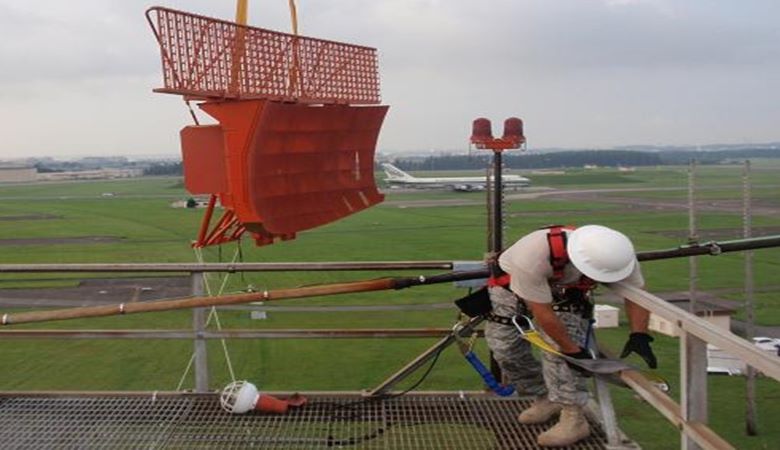Infrastructure Engineering and Deployment

The U.S. DOT Volpe Center’s Infrastructure Engineering and Deployment Division are industry leaders in providing hands-on infrastructure engineering solutions for the National Air Space, marine engineering, integrated systems security, surface and rail systems, and emergency management.
We enhance and protect transportation infrastructure through engineering design, testing, assessment, installation, integration, and implementation. We provide technical, analytical, engineering, and project management support for systems that support transportation infrastructure, equipment, and facilities, including vehicles and vessels, railways, waterways and ports, and surface structures.
Some highlights of our work include:
- Providing National Air Space (NAS) implementation and systems modernization support to DOD air traffic control and landing systems at more than 177 U.S. Air Force (USAF) sites worldwide along with joint program efforts for FAA for more than 20 years
- Serving as lead engineer on all phases of select USAF Foreign Military Sales programs for air traffic control, navigational aids, and landing systems in cooperation with the USAF Security Assistance Command and U.S. State Department to U.S. allies
- Providing 30+ years of engineering, infrastructure upgrades, and rail equipment acquisition support to address critical DOD rail equipment and infrastructure modernization needs
- Providing engineering, design, testing, and implementation efforts to modernize federal maritime programs, systems, and processes critical for enforcing laws and treaties, marine safety, environmental protection, and port security
- Providing lifecycle engineering and implementation support to improve the overall security posture and resiliency of multimodal transportation infrastructure against all-hazard incidents and maximize the effectiveness of response and recovery operations
- Providing fire protection and life safety engineering support, which includes designing, testing, upgrading, and managing building features and systems to minimize risk and help prevent interruptions, loss, injuries, and death from fire, electrical, and other hazards for:
- FAA to protect life, mission (National Air Space), property, and the safety of the flying public
- FRA on the benefits of fire detection and suppression systems on railcars
Our team of mechanical engineers, electronics engineers, general engineers, operations research analysts, and IT specialists work together to implement operational enhancements and improve infrastructure safety, security, and resilience on behalf of our sponsors, which include FAA, DHS, DOD, NPS, MARAD, NOAA, Defense Threat Reduction Agency, FTA, GSA, FHWA, and other federal, state, and local agencies.
Our Capabilities
Engineering and Technology Deployment to Enhance Transportation
- Deliver technical, analytical, architectural engineering, and project management support for improvements to transportation infrastructure, equipment, facilities, vehicles, vessels, and their systems
- Provide key transportation system lifecycle support, including systems requirement development, performance evaluation, operational test implementation, and change management
- Provide business case and lifecycle cost analysis on system recapitalization
- Provide infrastructure engineering support to include assessment, planning, site preparation, design, prototype development, deployment, implementation integration, removal/decommissioning of legacy elements, training, acceptance testing, construction oversight, maintenance and operational enhancements, command/control, and evaluation
Systems and Infrastructure Modernization and Optimization
- Provide system development, modernization, deployment, and sustainment solutions
- Deploy systems and support problem resolution sustainment
- Implementation of infrastructure and systems modernization plans and programs to improve safety and security
- Conduct systems and business case analysis, develop system requirements, evaluate performance, and resolve operational problems and interface issues associated with system deployment and sustainment
- Support system acquisition and development through requirements development, engineering change proposal management, and operational test and acceptance
- Provide full-service lifecycle marine engineering support including ship disposal analysis, fire life safety systems design and installation, ballast water management, navigational infrastructure, ferry and modular causeway system design, harbormaster command and control center support, and port infrastructure development grant support
Safety and Security Assessments
- Implement infrastructure and systems modernization plans and programs to improve safety and security
- Provide analytical support, including training programs (course development, materials, and workshops), risk assessments, regulatory assessments, and safety evaluations
- Provide integrated system security support including physical and cybersecurity system assessments, non-intrusive inspection technology implementation, urban explosive blast assessments, integrated physical security design and deployment, freight safety and security operational assessment, and emerging security risk assessments
Meet Our Team
View selected staff biographies.
 George Mantis, PhD
George Mantis, PhD
Chief
George Mantis, PhD is the U.S. DOT Volpe Center's chief of the Infrastructure Engineering and Deployment Division. His career at the U.S. DOT Volpe Center began as the U.S. DOT Liaison for Civil GPS Applications to U.S. Space Force (USSF) Space Operations Command, as well as the U.S. DOT Deputy Liaison for Civil GPS Acquisitions to USSF Space Systems Command. Later, Mantis managed three projects assessing PNT Protection, Toughening, Augmentation, and Adoption for civil maritime and rail applications, in response to White House Executive Order 13905 regarding national PNT.
Mantis’ 20+ year career in aerospace systems engineering encompassed both human spaceflight and military programs. His background in human space exploration included NASA’s former Project Constellation and Virgin Galactic’s SpaceShipTwo suborbital vehicle. Mantis' defense experience included federal service in the Advanced Technology directorate of the Missile Defense Agency, where he managed a $50 million technology development portfolio encompassing multiple SBIRs, STTRs, and OSD grants, in addition to leading a $22 million Broad Area Announcement. He joined the U.S. DOT Volpe Center from Draper, where he was the Systems Trades and Analysis Group Leader, supervising the technical staff. Mantis also served as a Deputy Technical Director of Draper’s support for the NASA Artemis mission, managing a $2 million lunar lander simulation project.
Mantis graduated with honors from Boston University’s College of Engineering (Boston, MA) and earned his Master of Science and Doctor of Philosophy degrees in aerospace engineering from the Georgia Institute of Technology (Atlanta, GA). He also earned a professional certificate in Systems Engineering from the Naval Postgraduate School (Monterrey, CA). Mantis' education included hands-on career experience with Pratt & Whitney’s commercial aircraft engines business, and The Boeing Company’s Phantom Works division. He holds multiple certifications from the Defense Acquisition University including Engineering, Science and Technology Management, and Contracting Officer's Representative.
